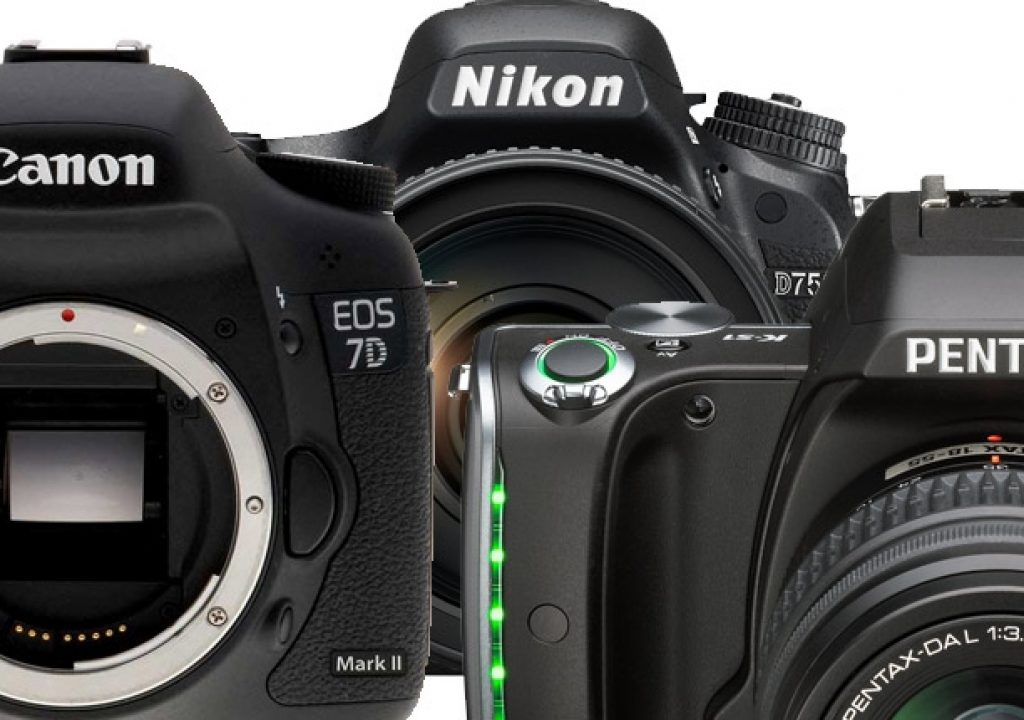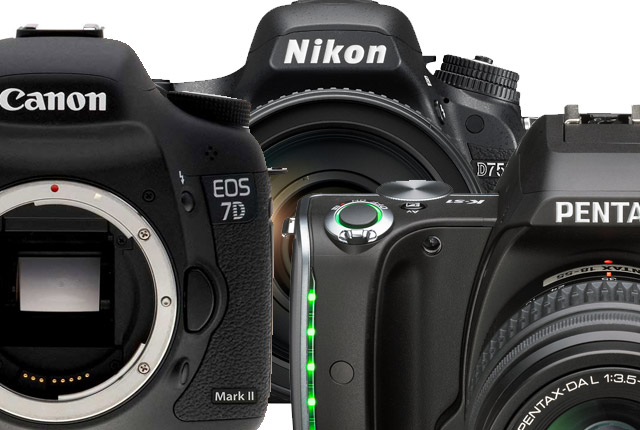
When Canon launched the EOS 5D MK II with video, it created, without being aware of it, the trend of DSLRs being used for video. Since 2008, DSLRs without video are almost unheard of – except for the Nikon Df. Create a list presenting some of the most popular models available seems a good idea now that we’re closing in for Christmas time. Here it is!
Although some people suggest that DSLRs as video cameras are going to be a thing of the past, the truth is that DSLRs are here to stay, as many photographers prefer to use them in their photography, and by extension in their video. For many photographers, video became an extension of their work, and if they keep doing both, it only makes sense to use a DSLR. Because of that duality, it also makes sense, when writing about DSLRs, to refer their functionalities both for photography and video, as usually those using them – a lot of people, and a growing segment of the market, it seems – use the cameras both for stills and video.
That’s the reason why, in a recent article about the new EOS 7D Mark II, besides mentioning the most relevant aspects of the camera in terms of video, I covered the general photographic specifications of Canon’s new APS-C top model. It makes no sense to cut a product in half when in fact it is built as a whole, and is mostly sold to people that will use the photographic side and, many times, also the video part of it.
So, this said, there is a question to answer. What is a DSLR? After seeing cameras from the mirrorless universe and others referred as DSLRs, I do think it is time to state that a digital single-lens reflex camera (also called a digital SLR or DSLR) is a digital camera combining the optics and the mechanisms of a single-lens reflex camera. This means that such a camera is different from all the others, as the light that travels through the lens to a mirror reaches an optical viewfinder, offering a real and clean image of the subject. When the shutter is activated the mirror goes up and the light reaches the sensor. That’s what a TRUE original SLR is!
If we leave aside names like Leica, which cater for a small segment of the market, there are only three real DSLR brands in the market today: Canon, Nikon and Pentax. Sony has stopped doing DSLRs in August 2010, and created what they call SLT, or single-lens translucent. Although similar in appearance to a DSLR, these cameras a fixed semi-reflective mirror, a technology Canon used in their SLR Pellix cameras in the sixties of last century but dropped after using in in some early EOS film cameras. Sony, which uses electronic viewfinders, also uses the acronym ILC – Interchangeable-Lens Cameras as an umbrella to all their cameras with… interchangeable lenses.
Sony is not the only camera maker to create models that are similar in appearance to REAL DSLRs. Browsing around the web one finds terms like “DSLR form-factor” or “DSLR-like” referring to models from Panasonic, Olympus, Samsung and others. Although most of those models have no optical viewfinder and rely on LCD screens or electronic viewfinders that, although having evolved from the stage of CCTV camera monitors, still do not compete with the clean image of a REAL optical viewfinder, people tend to call them DSLR, simply because many of them look like… DSLR. What they in fact are not!
This list, which may be a starting point for your own explorations, leaves out the top models from the different brands, and looks at the models mostly used by a large segment of users, picking on the most important elements for video as described by the camera makers. It should also be noted that Pentax is present with less models, as their offer in terms of video is, obviously, less exciting than what Nikon and Canon’s. So, without further ado, let us present a list of – some – of the available and most recent DSLRS for video:
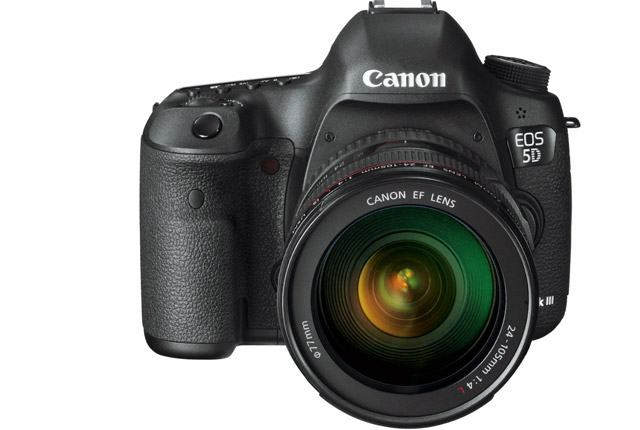
Canon EOS 5D Mark III
The 5D Mark III, launched in March 2012, is the reference when it comes to DSLRs used in film making. A full frame camera, it offers a 22.3 MP sensor, Full HD (1080p at 30fps)
The EOS 5D Mark III builds on the reputation of the EOS 5D Mark II, with a range of new features introduced following feedback received from photographers to provide even better Full HD video performance. As well as offering the depth-of-field control loved by video professionals, the new full-frame sensor combines with the vast processing power of DIGIC 5+ to improve image quality by virtually eradicating the presence of moiré, false colour and other artefacts. The addition of a movie mode switch and a recording button also offers greater usability, enabling videographers to begin shooting immediately when movie mode is engaged.
Additional movie functions include manual exposure control and an enhanced range of high bit-rate video compression options, with intraframe (ALL-I) and interframe (IPB) methods both supported. Variable frame rates range from 24fps to 60fps, and the addition of SMPTE timecode support provides greater editing flexibility and easier integration into multi-camera shoots. Users can also check and adjust audio during recording via the camera’s Quick Control screen and a headphone socket enables sound level monitoring both during and after shooting. Enhanced processing power provided by DIGIC 5+ also makes it possible to conveniently trim the length of recorded movies in-camera.
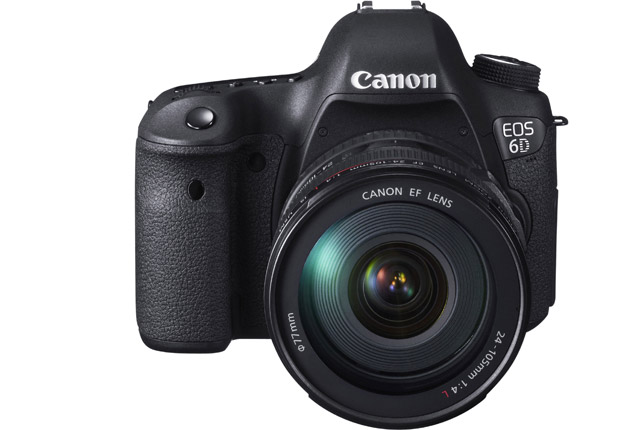
Canon EOS 6D
Considered by many to be an entry level model for full frame video enthusiasts, the EOS 6D was launched in September 2012. A similar size and weight to the EOS 60D, the EOS 6D was at launch time the world’s lightest DSLR to feature a full-frame CMOS sensor, making it ideal for travel, portrait and landscape photographers. The model creates a new entry point into Canon’s full-frame line-up, and is perfect for those who want greater control over depth of field, or to maximise the impact of shooting with the EOS system’s extensive range of wide-angle EF lenses.
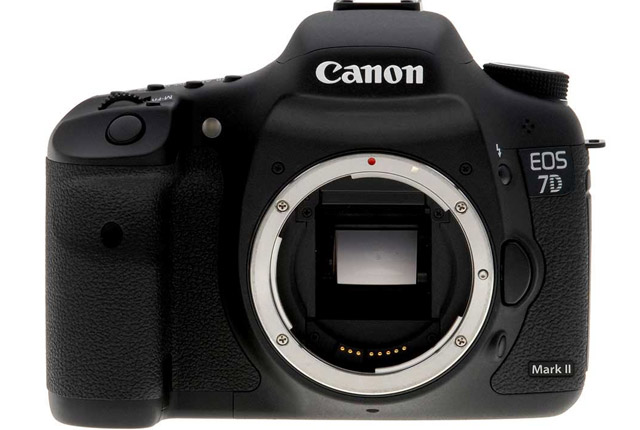
Canon EOS 7D Mark II
Available from November 2014 on, the EOS 7D Mark II camera offers users the ability to shoot in 1080p Full HD or 720p HD video up to 60p enabling slow-motion capture at full resolution in either ALL-I or IPB codecs with optional embedded time code, exceeding the specifications of other current EOS cameras. Users can also choose between .MOV and .MP4 recording formats for maximum flexibility. The EOS 7D Mark II camera’s mini HDMI port can be used to record uncompressed Full HD video to external recorders.
Canon’s Stepping Motor (STM) lenses, such as the EF-S 18-135mm f/3.5-5.6 IS STM lens, significantly reduce focus motor noise, letting the EOS 7D Mark II camera’s built-in microphone capture clear audio of the scene being shot without picking up unwanted noise from the lens. The EOS 7 D Mark II camera also features a stereo microphone port and outputs stereo audio via the camera’s mini-HDMI port. The EOS 7D Mark II Digital SLR camera is equipped with a headphone jack for real-time audio monitoring, as well as a silent control feature that allows users to adjust audio levels during recordings.
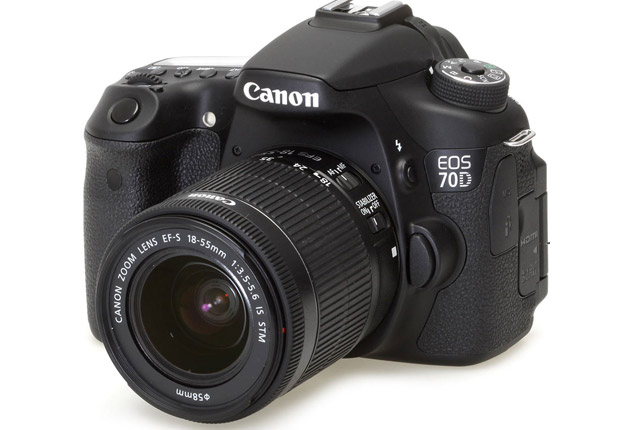
Canon EOS 70D
Launched in July 2013, the 20.2 MP APS-C sensor EOS 70D allows photographers to create high quality movies with ease. Full HD (1920 x 1080p) resolution video can be captured with a choice of selectable frame rates, including 30, 25 or 24fps, and 60 and 50fps at 720p, and a range of compression options for post-editing and sharing. Thanks to new Dual Pixel CMOS AF, Movie Servo AF mode tracks subjects as they move, or even as shots are recomposed, ensuring they’re always in focus. Alternatively, users can select different focus areas over 80 per cent of the frame simply by tapping the touch-screen, even when recording – ensuring that movies stay sharp and clear if a subject moves or the user changes the composition of a shot.
Videographers can also enjoy stereo sound using the internal microphone, or enhance audio with the built-in external microphone input terminal. Full control over settings such as aperture and ISO is also possible within manual mode, giving users greater freedom as their skills develop.
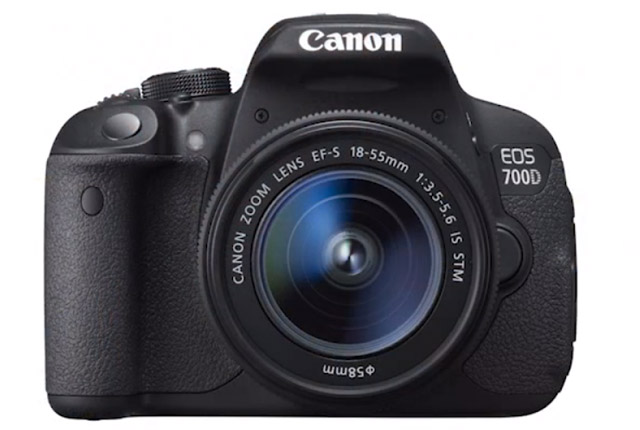
Canon EOS 700D /EOS Rebel T5i
Announced in March 2013, the 18MP APS-C sensor EOS 700D/ Rebel T5i, heir of the EOS 600D/Rebel 3Ti tradition, offers easy-to-use professional video capture. When users switch to EOS Full HD Movie mode, the EOS Rebel T5i offers the ability to shoot in 1080p Full HD video in a number of recording sizes and frame rates. With Canon’s Hybrid CMOS AF System and Movie Servo AF, the camera provides continuous AF for focus tracking of moving subjects by helping to reduce the camera’s need to “hunt”, resulting in a quick and smooth continuous AF. While shooting with one of Canon’s Stepping Motor (STM) lenses, such as the new EF-S 18-55mm f/3.5-5.6 IS STM lens, the camera will only capture the stereo sound of the scene being recorded. For added flexibility, the EOS Rebel T5i also features a built-in stereo microphone with manual audio level adjustment to enhance sound quality.
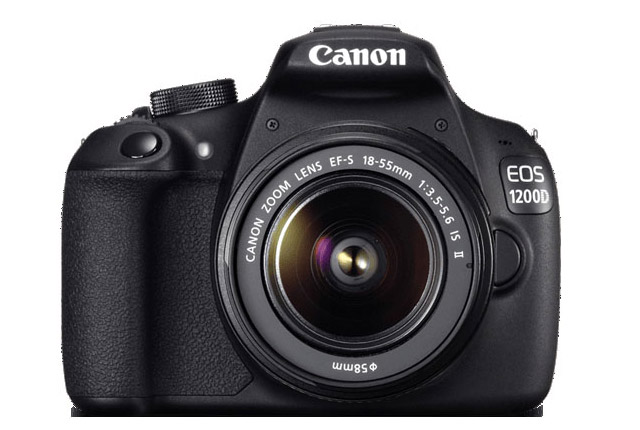
Canon EOS 1200D /EOS Rebel T5
Launched in February 2014, the APS-C 18MP sensor EOS Rebel T5 camera is designed for entry-level DSLR photographers looking to expand their creative options and advance their photography skills. The camera’s Full HD Movie mode helps make shooting high-quality 1080p movies simple. Capable of shooting in a number of recording sizes and frame rates, the EOS Rebel T5 enables easy manual control of exposure, focus and Live View features, as well as in-camera editing.
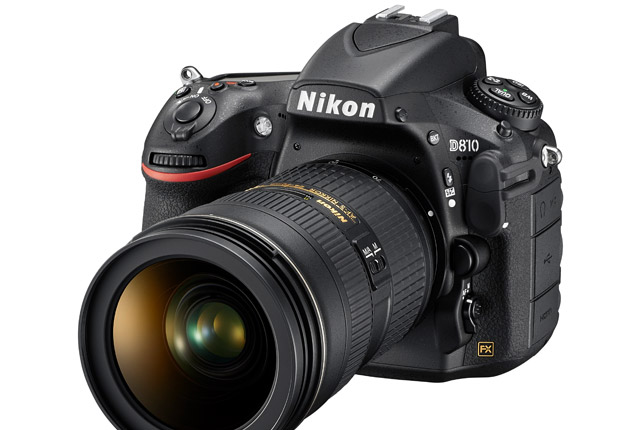
Nikon D810
Presented in July 2014, the D810 is the full-frame DSLR that cinematographers, camera operators and multimedia photographers using the Nikon brand have been waiting for. It may even lure some others to choose the Nikon D810 as their video camera. The Full Frame 36.3MP sensor offers proven and remarkable image quality and dynamic range to 1080p videos recorded at 60/50/30/25/24p uncompressed to an external device like the Atomos Ninja-2, compressed to an internal CF/SD card or both simultaneously. But there is more: you can move between dark and light scenes without any iris or frame-rate adjustments thanks to ISO Auto Adjust and also smoothly change a shot’s depth of field with power iris control.
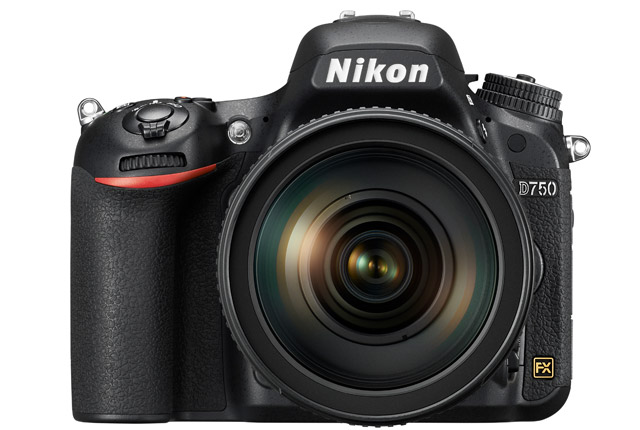
Nikon D750
Launched in September 2014, the D750 is Nikon’s first FX-format D-SLR with a tilting Vari-Angle LCD, with robust construction to meet the needs of working in the field. The precision 3.2-inch, 1,229K dot screen tilts to accommodate shooting overhead, at waist level and is ideal for shooting photos or HD video on a tripod. For those serious about using a D-SLR for video, the Nikon D750 delivers the same level of functionality found in the Nikon D810, with the maximum amount of manual control that’s essential for production applications.
The D750 features the same level of advanced video functionality as the Nikon D810. The camera can capture video in Full HD 1920×1080 resolution at 60/30/24p and gives videographers and multimedia artists full manual control, including aperture adjustment. Like the D810, the Power Aperture feature provides smooth transitions while adjusting the aperture during recording, and in manual mode, users can control shutter speed and ISO.
The D750’s compact size and affordability will make it a welcome addition to any production environment, as will its FX and DX-format crop modes that make it a snap to adjust the focal range without swapping lenses. Implementing another indispensable feature on-set, footage can be recorded to the dual SD memory card slots, or simultaneously output to an external recorder or monitor via HDMI for a variety of applications. Camera operators will also enjoy features such as headphone and microphone jacks, Zebra stripes to spot overexposed areas, as well as the ability to select frequency ranges for the internal stereo microphone. For time lapse, the camera utilizes Exposure Smoothing, a great feature that creates balanced exposure transitions between frames when using the time lapse or intervalometer feature.
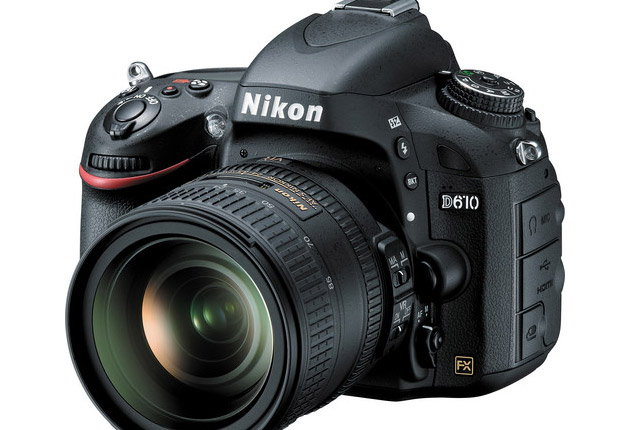
Nikon D610
Launched in October 2013, the Nikon D610 The D610 offers an effective pixel count of 24.3-million pixels, the superior rendering capability of the Nikon FX format, as well as the mobility of high-speed continuous shooting at approximately 6 fps. Despite its compact size and light weight, it is capable of the rich expression of tones, broad dynamic range, and low noise characteristics with shooting at high sensitivities expected of an FX-format camera. It also offers the beautiful blur characteristics, and superior image quality and rendering performance that challenges that of top end models like the D4, D800, and D800E.
By simply pressing the movie-record button just above and to the left of the shutter-release button in movie live view mode, users can enjoy movie recording that makes the most the camera’s approximately 24.3-million effective pixels. In addition, adoption of the H.264/MPEG-4 AVC video compression standard ensures that superior picture quality is maintained while data is compressed to allow for recording of a single movie for up to 29 minutes and 59 seconds.
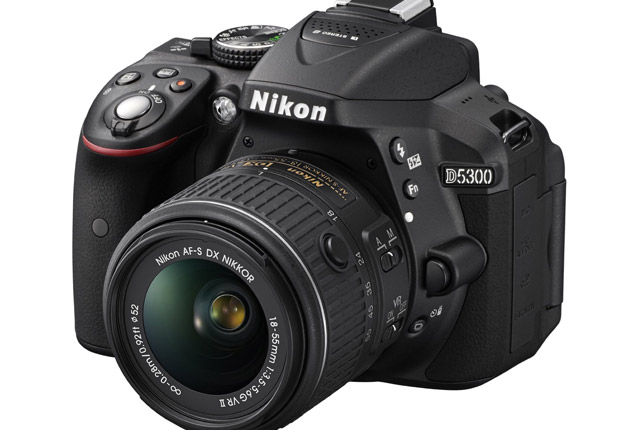
Nikon D5300
Announced in October 2013, the Nikon D5300 allows users to easily capture and share amazing images and videos. Though compact and lightweight, the Nikon D5300 packs an enhanced 24.2-megapixel DX-format CMOS sensor, EXPEED 4 image processing and the convenience of built-in Wi-Fi. Users now have the power to take both frame-worthy and share-worthy photos and HD videos with one device no matter where they are.
Create movies fit for the big screen with Full HD 1080p video capture at 60p with built-in stereo, wide ISO range for high quality videos in any light and improved full-time AF to keep the subject in focus.
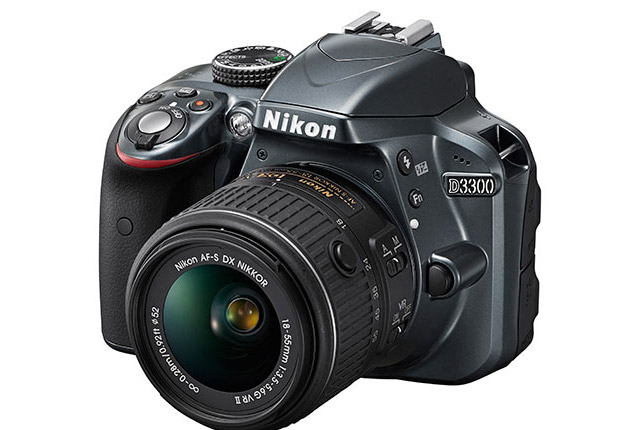
Nikon D3300
Launched in January 2014, the Nikon D3300 HD-SLR is for those ready to take their photography to the next level. Complete with a 24.2-megapixel DX-format CMOS sensor and EXPEED 4 image processor, the D3300 is capable of capturing stunning images and Full HD video with ease.
When the story is best told with HD video, Nikon’s newest HD-SLR is ready at a moment’s notice to help users create glorious Full 1080p HD video with vivid color and sharp details, up to 60p. Capturing gorgeous HD video is easy with the Nikon D3300 with the assistance of Full-time AF (autofocus) to help keep elusive subjects in focus, and a one-touch recording button so not to miss any moment.
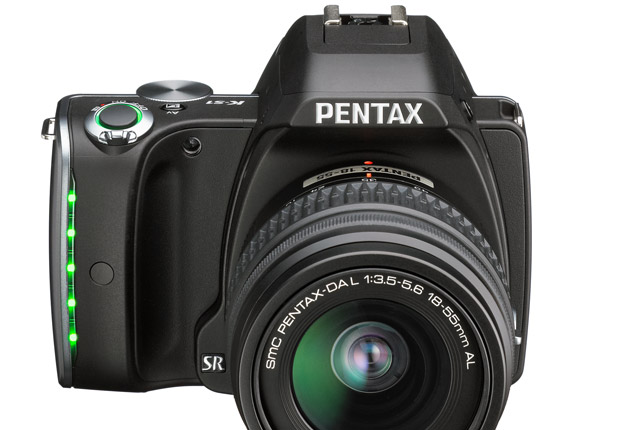
Pentax K-S1
Pentax (or Ricoh, which own the brand now) presented their new DSLR, the K-S1 in August 2014. Building on the many technologies benchmarked in the company’s popular K-3 advanced DSLR; the K-S1 incorporates a newly designed 20 megapixel image sensor, super-high sensitivity ISO 51200. In addition, this model contains in-body shake reduction, an AA filter simulator, 100% field of view glass pentaprism viewfinder, and 5.4 frames per second shooting at a fast 1/6000 shutter speed. Adding to the user experience is the camera’s unique flat field user interface, which integrates a back-lit LED selection dial, four-way navigation, and a bright 3″ 921,000 dot LCD that breaks tradition of the knobs and buttons found on traditional DSLR cameras. Full HD 1080p video recording is possible at 30/25/24 fps, and at 60/50fps in HD 720p.
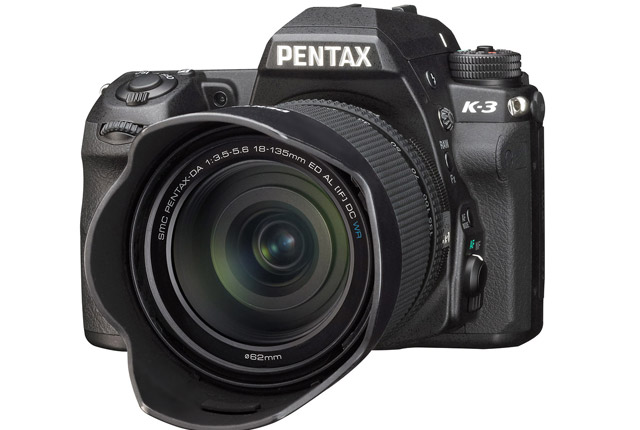
Pentax K-3
The Pentax K-3, presented in October 2013, is the first DSLR in Ricoh APS-C lineup. The camera boasts a 24 megapixel APS-C CMOS sensor, incredibly fast 8.3 fps (frames per second) frame rate, innovative selectable anti-aliasing (AA) filter technology and outstanding HD video performance; all while giving demanding photographers dual card slots for quick and easy image recording and seamless wireless remote capture and image transfer capabilities.
The K-3 also features an enhanced video recording experience including the ability to change from still image to video recording with the flip of a dedicated switch to capture full HD movie recording in H.264 format. The K-3 comes equipped with a headphone terminal and stereo mic terminal for external microphone connection. The user can also adjust the audio recording level manually and monitor sound levels during recording. In addition to a variety of creative special-effect modes, the K-3 also provides an upgraded interval movie mode, which captures a series of 4K-resolution movie clips (3840 x 2160 pixels) at a fixed interval.

Filmtools
Filmmakers go-to destination for pre-production, production & post production equipment!
Shop Now